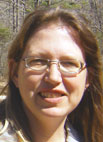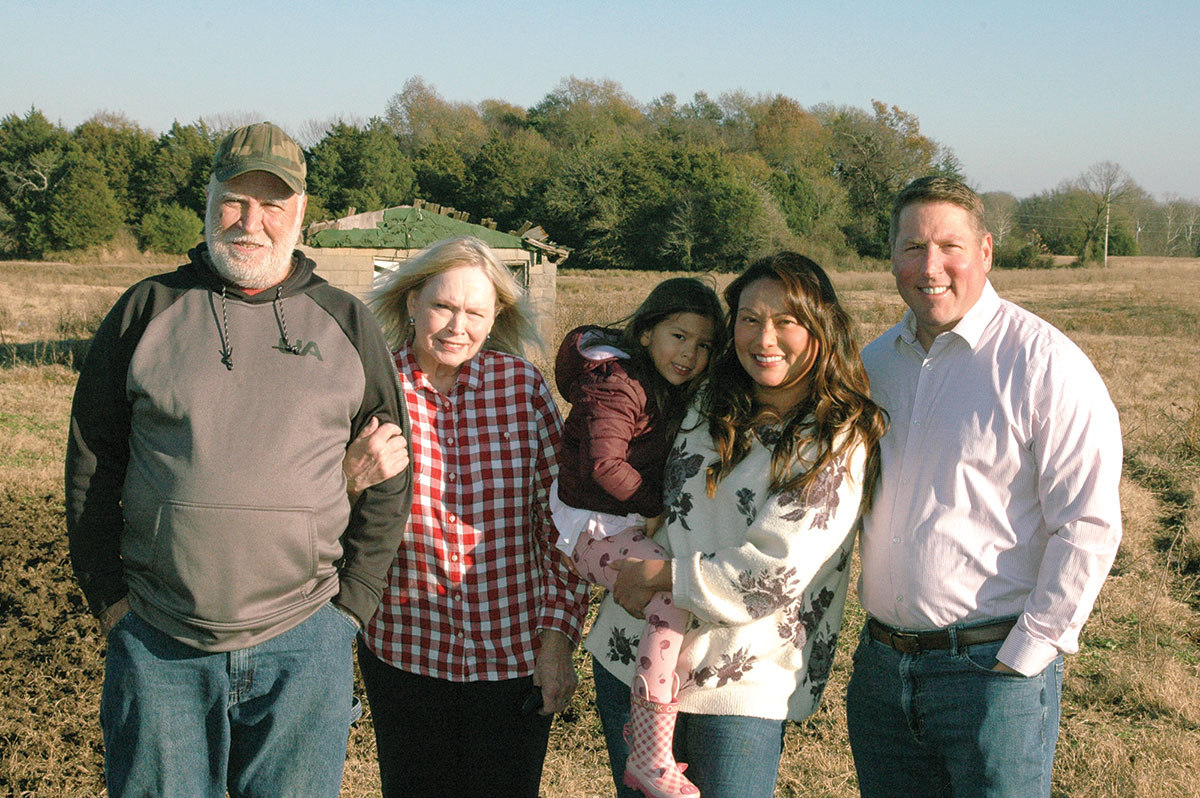
Twelve years ago Jeanette Larson moved to the Ozark Mountains from Colorado. She attended CSU in Fort Collins, Colo., majoring in Forestry and Animal Science. In Arkansas she utilizes that degree raising Jacobs, an ancient, domesticated breed of sheep. Historical documentation indicates the breed originated three thousand years ago. When they first moved to Arkansas, they had 120 sheep, but currently they have 12. She considers the fleeces from Jacob sheep a delight for hand-spinners, with healthy luster and sheen.
“We’ve always been crafters,” Jeanette said, “and we needed sheep that are hardy and can take care of themselves. I like the Jacob, because they are a unique animal and I’m doing my part in preserving a rare breed. My daughter Elena Augustine and I do all the shearing, we shear by hand. That makes it easy to pick the softest, cleanest and longest fleeces. Jacobs are small and easy for one person to handle, and they lamb easily. In March of 2008 I went to work as Craft Director at the Ozark Folk Center in Mountain View, Ark., and Elena does a lot of the day-to-day chores.”
Jeanette and her partner, Shawn Hoefer, live about five miles from Fox, Ark., on several acres of the 16,000 acres that make up a wildlife land trust called Meadowcreek Wildlife Preserve. Along with three other families that live on the land, they keep an eye out as people travel the roads, cleaning up litter, watching for forest fires; also their presence discourages people from gathering truckloads of rocks.
“Our sheep have several small pastures that we rotate, as they cannot run loose on the Wildlife Preserve,” she said. “We have chickens for eggs and dairy goats for milk. We butcher a couple of sheep each year and process the meat for our own use, and grow a vegetable garden.”
Jacob sheep are small and efficient, allowing more sheep per acre, ideal for either a small flock owner, or the large breeder. They rarely need veterinarian intervention, and lambs are up and nursing quickly after being born. When the sheep aren’t on grass, Jeanette feeds them grass hay, 12 percent sweet feed and keeps a mineral lick out.
“Most of our sheep are two-horned,” Jeanette said. “We have three, four-horned ewes.”
Carriers of the polycerate gene, different Jacobs produce two, four, or six horns. Both ewes and rams have horns. There are no polled Jacob sheep.
“I wasn’t interested in the sheep at all when Mom first got them,” Elena said. “But I’ve learned to spin, now I have a craft that I enjoy.”
Although they appear to be white sheep with black spots, in fact they are black with white markings, prized for their natural color.
“Elena washes, dyes and spins fleeces into uniquely beautiful yarns,” Jeanette said. “I weave and felt some of them into rugs. We also sell to spinners and other fiber artists.”
Jeanette brings the animals to a pen close to the house at night. “We have lots of coyotes back here,” she said. “Our llama is a great guardian, but we don’t want to push our luck. We’ve had problems also with stray dogs.”
“When I retire, I’ll increase the herd size again, and go back to working with the sheep full-time,” Jeanette said. “If Elena wants to take over someday, I’ll do all I can to help her.”







